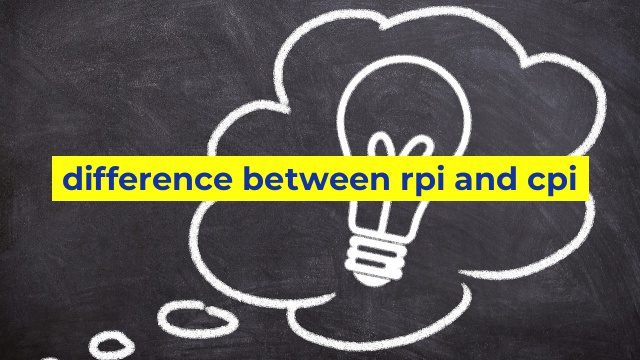Understanding the Difference Between RPI and CPI
What is RPI?
RPI or Retail Price Index is a measure of inflation in the United Kingdom. It is an index that tracks the price changes of a basket of goods and services like food, housing, clothing, and transport. RPI is calculated by the Office for National Statistics (ONS) and is used to determine the increase in prices of certain goods and services.
RPI includes the changes in prices of certain items, such as mortgage interest payments, which are not included in the Consumer Price Index (CPI). It is often used as a benchmark for wage increases, rent reviews, and pensions.
What is CPI?
CPI or Consumer Price Index is also a measure of inflation, just like RPI. It calculates the average price changes of goods and services purchased by households in a particular country. CPI is widely used by governments and central banks to determine the monetary policy of a country.
Unlike RPI, CPI excludes certain items such as mortgage interest payments, council tax, and house prices, but includes goods and services purchased by households such as clothing, food, and transport.
The Key Differences between RPI and CPI
The primary difference between RPI and CPI is the basket of goods and services they track. While RPI includes certain items that are excluded from CPI, such as mortgage interest payments and council tax, CPI includes other items such as clothing, food, and transport that RPI excludes.
Furthermore, RPI is calculated using a formula that averages the price changes of a basket of goods and services over a specific period, while CPI uses a weighted average formula to calculate price changes. This means that different goods and services have varying weights in CPI, based on how much households spend on them.
Another difference between RPI and CPI is their use. While RPI is widely used as a benchmark for wage increases, rent reviews, and pensions, CPI is used by governments to determine the monetary policy of a country, including setting interest rates and adjusting taxes.
Conclusion
Overall, both RPI and CPI are measures of inflation that track the price changes of goods and services. While they share some similarities, such as their calculation formula, they differ in terms of the basket of goods and services they track and their use. Understanding these key differences between RPI and CPI can help individuals and businesses make better decisions when it comes to financial planning and investment strategies.
Table difference between rpi and cpi
| RPI | CPI | |
|---|---|---|
| Full form | Retail Price Index | Consumer Price Index |
| Definition | A measure of changes in the cost of goods and services paid by households in the UK. | A measure of the average price of goods and services purchased by households in the UK. |
| Calculation method | Based on the cost of a basket of goods and services purchased by households in the UK. | Based on the price of a basket of goods and services purchased by households in the UK. |
| Frequency | Published monthly | Published monthly |
| Usage | Used as a measure of inflation | Used as a measure of inflation and to adjust benefits and pensions |


